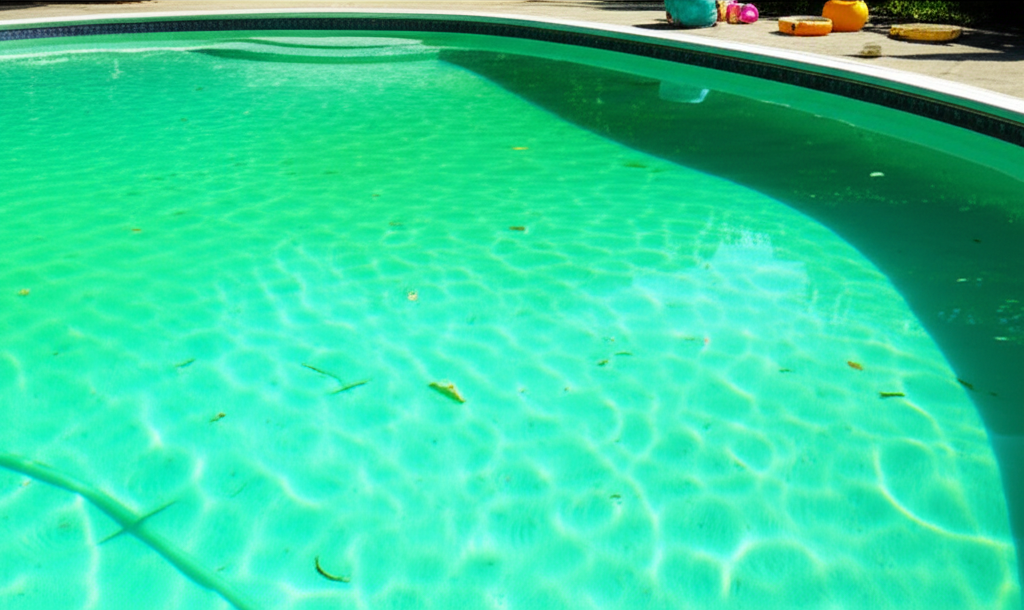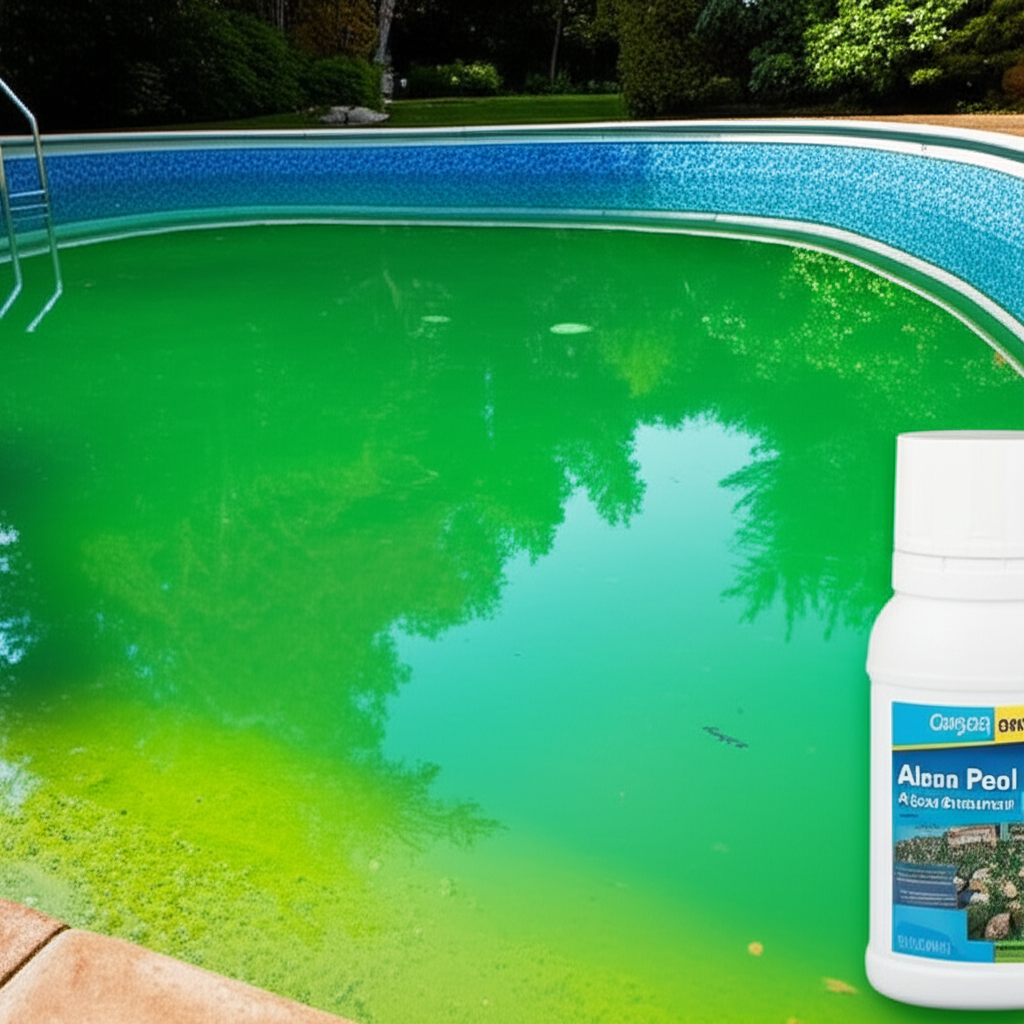Green Pool. The mere sight of it can send shivers down a pool owner’s spine. What was once an inviting oasis has transformed into a murky, unappealing swamp, typically due to an uncontrolled algae bloom. Facing a verdant water feature can feel overwhelming, but the good news is that most cases of a green pool are entirely treatable, often quickly and easily, with the right approach and a little elbow grease. This guide will walk you through the effective steps to reclaim your crystal-clear swimming haven.
Why Your Pool Turned Green: Understanding the Algae Invasion
Before diving into the solution, it’s helpful to understand the common culprits behind a green pool. Algae are microscopic plant-like organisms that thrive in warm, stagnant, or nutrient-rich water. Their rapid proliferation is often triggered by one or more of the following factors:
Insufficient Sanitizer: The most common cause. Low chlorine levels allow algae to take hold and multiply unchecked.
Poor Filtration: A dirty or malfunctioning filter can’t effectively remove algae spores and other debris, leading to an accumulation.
Imbalanced Water Chemistry: Incorrect pH or alkalinity can reduce the effectiveness of your sanitizer, even if levels seem adequate.
High Phosphates: Phosphates are a primary food source for algae. They can enter your pool from fertilizers, leaves, or even tap water.
Lack of Circulation: If your pump isn’t running long enough (typically 8-12 hours per day), the water can become stagnant in certain areas, creating breeding grounds for algae.
Environmental Factors: Heavy rain, hot weather, and organic debris (leaves, pollen) can all contribute to an algae bloom.
Assessing the Greenness: Knowing Your Foe
Not all green pools are created equal. The severity of the bloom can influence the intensity and duration of the algae treatment required.
Light Green/Cloudy: Often a sign of early-stage algae. The bottom might still be visible, but the water lacks its usual sparkle.
Murky Green: The water is distinctly green, and visibility is very limited. This requires a moderate approach.
Dark Green/Slime Green: The pool looks like pea soup, and the bottom is completely obscured. This indicates a significant algae problem.
Black Green/Brown Slime: This is a severe infestation, often accompanied by black algae (which is actually a type of cyanobacteria). This requires aggressive treatment.
Essential Tools and Supplies for Algae Treatment
Before you begin, gather these crucial items:
Water Test Kit/Strips: Essential for accurate chemical readings.
Pool Brush: For scrubbing walls and floor.
Telescopic Pole: To attach your brush and vacuum head.
Pool Vacuum: Manual or robotic.
Pool Shock (Calcium Hypochlorite or Dichlor): The primary weapon against algae.
Algaecide (Optional but Recommended): Boosts the effectiveness of shock and prevents recurrence.
Flocculant or Clarifier (Optional): Helps consolidate dead algae so it can be vacuumed or filtered.
Safety Gear: Goggles and gloves for handling chemicals.
The Step-by-Step Guide to Green Pool Algae Treatment
Tackling a green pool systematically is the fastest way to restore its clarity.
Step 1: Test Your Water Chemistry
Before adding any chemicals, always test your pool water. Pay close attention to pH, alkalinity, and chlorine levels. A balanced pH (7.4-7.6) is critical for your shock treatment to be effective.
Step 2: Balance pH Levels
If your pH is off, adjust it first. If it’s too high, add a pH reducer (acid). If too low, add a pH increaser (base). Wait several hours and retest to ensure it’s within the ideal range before proceeding to shock.
Step 3: Brush the Pool Surfaces Thoroughly
Using a stiff pool brush, scrub all walls, steps, and the bottom of your pool. This dislodges algae from surfaces, making it easier for the shock to kill it. Pay extra attention to shady areas or corners where algae often cling.
Step 4: Shock Treatment (The Core of Green Pool Algae Treatment)
This is where you’ll deliver a concentrated dose of sanitizer to kill the algae. How much shock you need depends on the severity of the green pool:
Light Green: 1-2 lbs of shock per 10,000 gallons.
Murky Green: 2-3 lbs of shock per 10,000 gallons.
Dark Green/Slime Green: 3-5 lbs of shock per 10,000 gallons.
Always read and follow the manufacturer’s instructions for your specific shock product. Most granular shocks should be pre-dissolved in a bucket of water before slowly pouring around the perimeter of the pool, preferably at dusk or nighttime to prevent the sun’s UV rays from diminishing its effectiveness. Run your pump during and after shocking.
Step 5: Run Your Filter Continuously
After shocking, run your pool filter for at least 24-48 hours continuously. The filter is crucial for removing the dead algae, which will turn gray or white as it dies. Clean or backwash your filter frequently during this period as it will quickly become clogged with dead algae.
Step 6: Add Algaecide (Optional but Recommended)
Once you’ve shocked the pool, and if the water is still cloudy or if you’ve had persistent algae issues, a good quality algaecide can act as a booster. It helps to consolidate remaining algae and inhibits future growth. Follow the product’s dosing instructions carefully.
Step 7: Vacuum and Clean
Once the dead algae settles to the bottom (it will likely look like a gray or white dust), it’s time to vacuum it out. For heavy sediment, it’s best to vacuum directly to waste (bypassing your filter) to prevent clogging your filter and returning the algae to the pool. If you don’t have a “waste” setting, backwash or clean your cartridge filter thoroughly after vacuuming.
Step 8: Retest and Rebalance Again
After all these steps, retest your water chemistry, especially chlorine, pH, and alkalinity. Your chlorine levels might be very high, which is normal after shocking. Continue running your filter until all dead algae is gone and your water is sparkling clear. You may need to repeat the shock and brush steps for very severe green pools.
Maintaining a Clear Pool: Prevention is Key
Once your pool is clear, the goal is to keep it that way.
Maintain proper chlorine levels (1-3 ppm).
Keep pH and alkalinity balanced.
Run your filter for at least 8-12 hours daily.
Brush and vacuum regularly.
Consider using a phosphate remover if you have recurring algae issues.
* Shock your pool weekly or bi-weekly, especially during hot weather or heavy use.
Turning a green pool into a sparkling blue oasis is a satisfying achievement. By following these steps, you can effectively treat algae and deter its return, ensuring your pool remains a source of joy, not despair.




